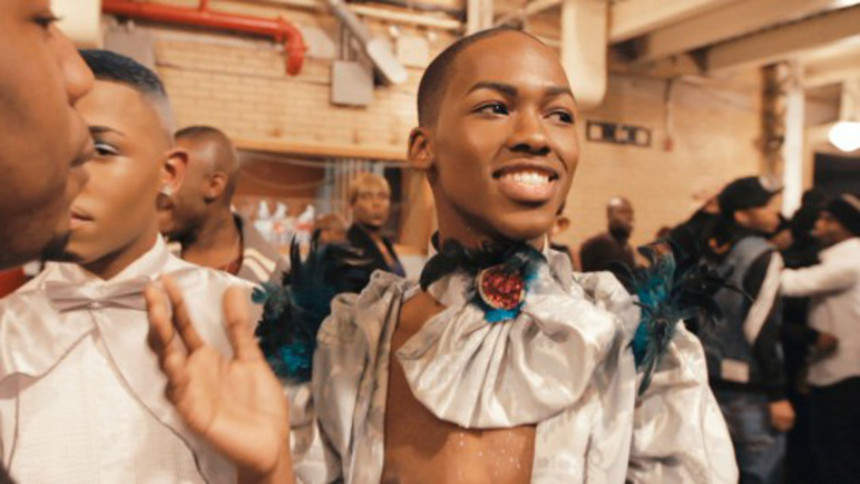Berlinale 2016 Review: KIKI Knows It's Sexy

Billed as a sort of follow-up to Jennie Livingston's Paris Is Burning, Sara Jordenö's debut feature takes us back to the heart of the New York's ballroom scene - only this time the director casts her lens over a very specific part of that enduring cultural scene.
Having already screened at Sundance, Kiki focuses on a youth subsection of the vogue movement which people like Livingston and Madonna helped to make internationally famous back in the '90s. And the decision to make this documentary about a number of socially eminent figures such as Twiggy Pucci Garcon (who stars and helped co-write the film) also feels like a long overdue update on that LGBTQ community's thoughts and feelings, meaning this film sings out from the Panorama Documents programme loud and proud.
The word "KIKI," presented in the opening credits as big, beautiful block lace capitals, is actually slang for "fun," and that is certainly one thing this documentary is. Jordenö rushes us straight into a guided tour of the West Village Pier and the numerous "houses" (or teams) that make up the incredibly hard-fought dance competitions that fill most of this colourful movie. And whilst quite a lot of serious exposition finds its way into the movie's overall arc, that's generally because it is so deeply committed to providing a genuine source text for educating people on the modern-day LGBTQ experience.
What's more, Kiki really strives to let them do this in their own voice, with there only being two or three interruptions from the crew the whole time (which would have perhaps been best omitted entirely). That means that as the camera roves through their frenetic lives - looking like a super high-class Vimeo video - the documentary's voice-over is often that of the subjects themselves. Plus, what is particularly nice about the film's wondering walks is the momentary, static pauses the director makes her performers take, giving them just long enough to contextualise the people in a much wider New York or American setting.
But this film is rarely static, with this community's gorgeous dancing prominently taking centre stage. Right from the get go, this film drops some very deep beats, and moments later the incredibly young, athletic performers begin their self-sculptured art right across the city. Like a feature-length music video, the performer's albatross-esque arms immediately begin to wave in time to the music, and backs stay arched whilst stiff legs energetically lock and pop and an insane about of back drops neatly underscore some of the movie's most impassioned moments.
Though this isn't necessarily a film which is purely exuberant. More often than not, these explosive motions actually counterpoint some extremely deep, intimate confessions, and this really demonstrates what a sort of physical act of defiance these competitive "walks" are, as they collectively all work to create a sphere of acceptance and support. In some ways this gets very American too, with the talk of "homes" and newly forged "families," clearly coming to resemble the traditional social units that underpin American society.
There's a real undercurrent of that much-cherished Dream too, as everyone in this community has the right to become whoever they want and have their liberty respected. And that is something we see increasinly occurring in the film as it follows Twiggy to the White House, on the eve of the announcement of gay marriage being legalised. But a number of the fundamental components of this society has also often disappointed or deserted these people, and Kiki does work hard to emphasise what a major issue things like LGBTQ homelessness still is today.
So this film never rests on its laurels and declares the fight over. Instead it goes to great pains to illustrate the sliding scales of representation and discrimination, with people like black women of the transgender experience often coming off the worst. What's more, there's always a two-directional tension in this film, as we see a number of people simultaneously finding the acceptance of some family members and at the rejection others. However, the trips that Jordenö takes into her friend's childhoods does always go to demonstrate how unbelievably resilient these people have managed to become, and that really is incredibly inspiring.
Plus, on the 25th anniversary of Paris Is Burning and a very special 30th anniversary for Berlinale's Teddy Award, you can't help but feel that this documentary strongly reinforces the importance of continuing to tell these kinds of stories. Above all, Kiki makes very clear that so much of this side to New York's history has been forgotten, and its attempts to restore this history back as far as 1920 is certainly fascinating.
Likewise, this director's decision to act as a bridge between these prodigious talents and the film industry cannot be undervalued, and this film will definitely resonate well with fans of Livingston's 1990 classic. Told in a TV-friendly 1:78:1 format and now a winner of a Teddy Award for best documentary, you also can't help but feel this Swedish-US co-production will reach a wide audience on TV in the not so distant future.

Do you feel this content is inappropriate or infringes upon your rights? Click here to report it, or see our DMCA policy.






